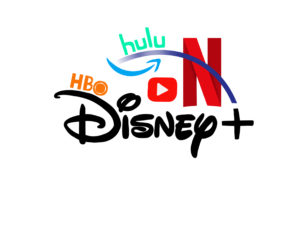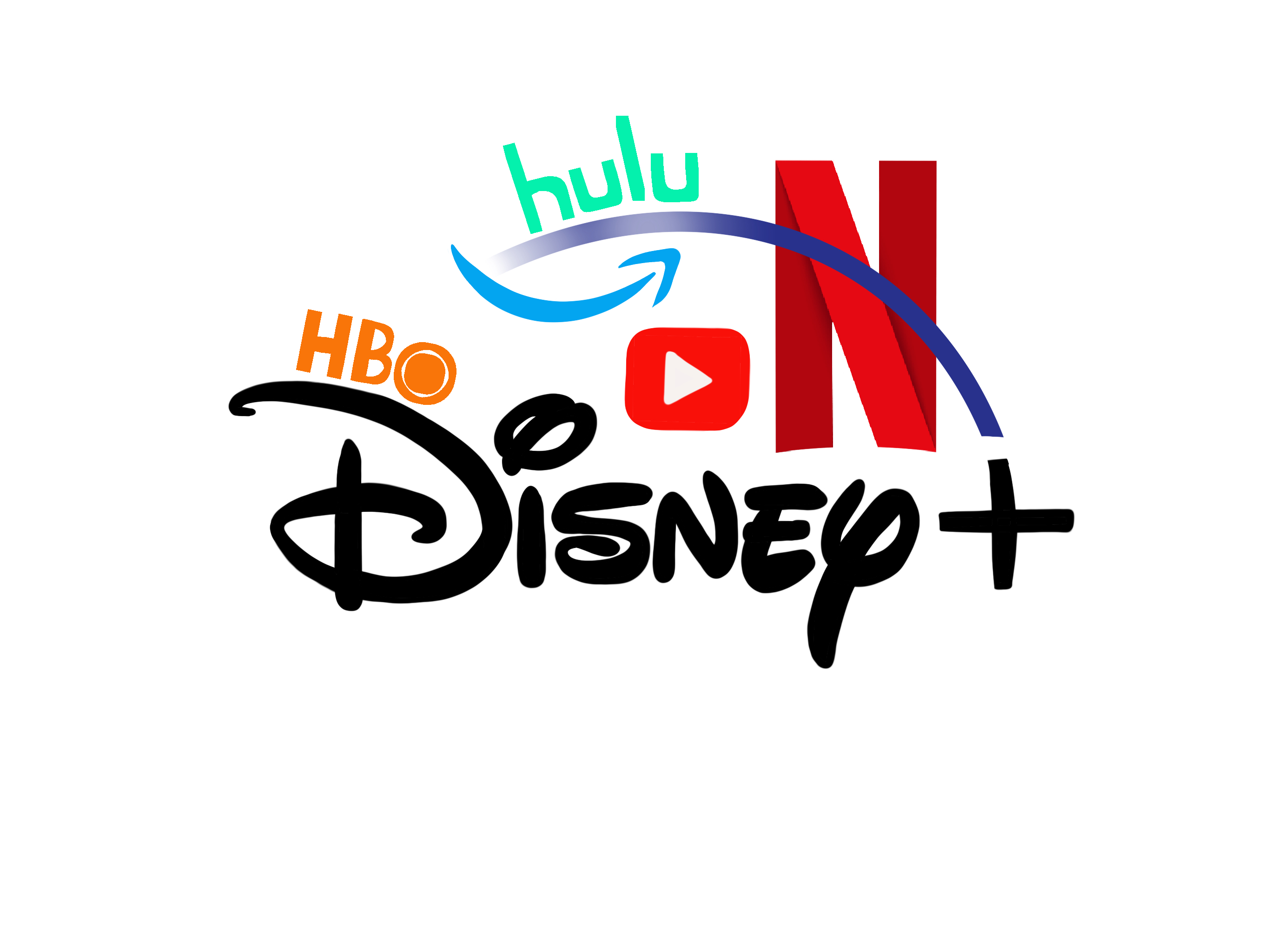On December 25th, people all across the country received various gifts and presents in the spirit of the holiday season. However, for more than 10 million people, another gift came the day after. No, not because of the British holiday Boxing Day. For the roughly 10 million users who pay $6.99 a month for Disney+, this gift was the season finale of the cultural sensation The Mandalorian.
However, with the season finale of The Mandalorian also came a looming question for the immediate future of Disney+. For many, including myself, The Mandalorian was the initial and sole draw to Disney+. Yes, okay, I do vibe to the Princess and The Frog soundtrack. And I admit to enjoying revisiting the movie Cars that was the focus of my childhood. But without The Mandalorian, do I think that the plethora of animated princess movies is worth $6.99 a month? Well, that’s a complicated answer.
First, let’s go over what exactly Disney+ is. It is one of the many subscription-based online video streaming services that offers users access to various movies and shows on computers and mobile devices. As implicated in the name, Disney+ is a streaming service offered by Disney Inc., the owner of two other streaming services, Hulu and ESPN+. All shows and movies owned by, produced by, or affiliated with Disney are hosted on the service. What is particularly unique about Disney+ compared to other streaming services is that, while other streaming services offer a wide variety of shows and movies that changes every year or so based on what the service predicts will be popular, Disney+ offers only media owned by Disney and offers all the media owned by Disney; content does not change on Disney+. Therefore, one could hypothetically watch the entirety of Disney+, a limitation not found on other platforms. Nevertheless, Disney+ is predicted by Morgan Stanley analyst Benjamin Swinburne to be the second most subscribed-to video streaming service within the next two years, second only to Netflix.
Thus, there is a clear sustained appeal to the Marvel-Princess-Star Wars platform. I myself am a subscriber to Disney+. However, this is more a result of circumstance than active desire. Verizon gives customers who are on an Unlimited plan free access to Disney+ as well as Apple Music. Therefore, I received Disney+ for free with my Verizon plan (though I am sure I am actually overpaying for the service somewhere in my bills). I am also a subscriber to Netflix, Hulu, and have Xfinity for my cable service. Yet, while I am subscribed to many video and television services, I would contend that I have never taken proper advantage of them. I think I have only ever opened Hulu twice, Disney+ is figuratively collecting dust ever since the finale of The Mandalorian. Still, despite my video streaming inactivity, I refuse to cancel my subscriptions. Why? Frankly, I am unsure. I think there is a sense of anticipatory fomo where I am constantly questioning: well what if they do add a show I really want to watch or what if someone comes over and wants to watch something. It is this hypothetical trepidation that keeps me roped into paying these companies hundreds of dollars every year just so I can keep them in my back pocket.
Accordingly, I would argue no streaming service outside of cable is worth the money for me. However, my intent is to analyze the comparative value of these streaming services, not their monetary value on their own.

Sony offers a streaming service titled Playstation Vue. I admit I do not know anything about what is offered on this platform. Sony charges $59.99 a month for the Vue. The price tag is significantly higher than most other video streaming services. Yet, Vue is unique in that it is intended to be a true substitute for cable, offering live television channels in addition to on-site movies and shows. However, the service is set to be discontinued on January 30th, so I guess that speaks for the platforms value itself.
Google offers another replacement to cable television in Youtube TV. For a monthly rate of $49.99, users gain access to 70 different standard cable channels such as CNN, FOX, ESPN, CBS, and PBS. For an extra $15 a month compared to Xfinity cable, one can have SteveWillDoIt drinking a full handle of vodka and the presidential debates only a click apart. The Youtube Red original shows, the shows and movies produced and funded by Youtube, are pretty pathetic overall. They are half-baked excuses of shows written and acted by famous Youtubers with zero acting experience that draw seven-year-olds to swipe their mom’s credit cards to see their favorite screaming gamers dress up for a sixth-grade play. While I’m sure this convenience is appealing to many young Americans, I believe there are better alternatives to live cable out there.
Now, onto Starz Online. When I subscribed to a free trial for research purposes, I was amazed. Starz absolutely changed the way I saw the value of streaming services. It really opened up my mind and revolutionized my enjoyment of video streaming. Everytime I opened Starz, I could not help but think to myself: wow. Just wow. $9? There’s no way! Truly, there is no way that Starz can charge $9 a month for the streaming equivalent of a week-old unpackaged saltine crackers. Even though I didn’t pay anything for my free trial, I actually walked away from Starz feeling cheated. If Starz was totally free, I would argue it would still be overpriced. I truly had no idea so many mindless and terrible television shows could exist on one platform. Starz Online hosts the type of shows that you see your grandmother watching which makes you question if she’s actually watching the show or if she’s died on the couch with her eyes open and you need to call an ambulance. Even just watching the trailers for the entertainment masterpieces such as Da Vinci’s Demons and Blunt Talk made me feel physically ill. I just wonder what went through the Starz producers’ minds when they gave the thumbs-up and millions of dollars in production budget to a pitch about Leonardo Da Vinci sprouting wings and battling the Catholic Church. I was honest when I said Starz revolutionized how I saw the value of streaming. By comparison, nearly every other online video streaming service feels like a bargain.
Yet, there are services out there that, while not as bad as Starz, still feel like a royal waste of money. Showtime Online is a perfect example of one of these services. Both Showtime and Starz are networks that air their original shows on standard cable television in addition to hosting them on their streaming platforms. Therefore, one could stream all of Starz and Showtime with cable and perhaps some additional packages. Starz and Showtime have a combined monthly fee of $20, more than half the cost of Xfinity. For only a fraction of shows offered on cable without access to live airings, charging over half the cost of cable is absurd. Unless you are a diehard fan of the handful of cancelled Starz or Showtime shows, these platforms are not worth your money.
Now, onto the most recognizable name in the world of video streaming: Netflix. Netflix, unbeknownst to many, has three different subscription plans. The primary difference between these plans are the video quality and resolution that titles and shows can be streamed at. Ranging from $8.99 to $15.99 a month, video quality ranges from low SD to high 4K when available. Of course, the screen resolution of one’s laptop or monitor that will be hosting Netflix will determine if the more expensive Netflix plans are even worth it. I personally pay for the $12.99 for the standard Netflix plan, able to stream two screens at once in standard HD. Most shows on Netflix are not shot in 4K anyways, so that extra $3 a month seems hard to justify. However, resolution aside, Netflix is the most popular streaming service in the world, and for good reason. The service regularly rotates their content every few months while keeping the fan-favorite shows and movies on the platform for longer. The quality of shows and movies on the platform are consistently high. Netflix offers critically acclaimed movies from the past couple years such as Moonlight in addition to beloved movies from the past such as The Matrix. The variety of genre and taste that Netflix hosts ensures a broad appeal to the platform, unlike some of the network-specific platforms previously mentioned. They release whole seasons of a show, hours worth of content, all at once, promoting binge-watching. However, the true draw of Netflix, as I alluded to earlier, is a fear of missing out. I, along with many others, subscribe to Netflix even despite limited use to have access to the shows and movies that become pop-culture phenomenons. Without Netflix, I would be unable to understand or relate to the memes or references that center on the immensely popular shows hosted only on Netflix. Netflix pays hundreds of millions of dollars to provide shows such as The Office or Parks and Rec because it seems every adolescent watches these shows, oftentimes on repeat. What also distinguishes Netflix from other streaming services is the popularity and quality of Netflix Originals, shows or movies funded and produced by Netflix to be offered exclusively on Netflix. Must-binge shows such Stranger Things, Big Mouth, and You have become immensely popular, and it seems popularity and a dedicated viewership fosters growth in viewership, drawing in people who want a point in common, a shared experience to relate or discuss with other viewers. Netflix has become a staple in American adolescent culture; to not know Stranger Things or Black Mirror is almost viewed as un-American. Are you a surviving loyalist to the Soviet Union? No? Do you want to be a functioning member of American society? Yes? Then Netflix is a must-have for anyone who enjoys watching movies or TV shows.
The second most popular streaming service behind Netflix is Hulu. Hulu is in a lot of ways very similar to Netflix. Hulu hosts a wide variety of shows and movies, many of which are incredibly popular. However, Hulu does not try to be another Netflix. Instead, Hulu targets consumers who want to keep up with the latest TV shows. They add episodes to platform right after they air on live television, feeling more like regular television scheduling as opposed to hours of binge-watching. Moreover, the standard Hulu plan for $6.99 a month includes commercials and advertisements during videos (though the premium plan for $11.99 a month removes these ads and improves video quality marginally). I will admit that the ads are a jarring break from my entertainment, especially after becoming accustomed to no ads with other streaming services. However, I appreciate that Hulu uses ads to keep their monthly fee so low, as the premium plan is more akin to the price of its competitors. For those who want to get rid of cable but still enjoy keeping up with their favorite shows, I would strongly recommend Hulu as the removes these ads and improves video quality marginally). I will admit that the ads are a jarring break from my entertainment, especially after becoming accustomed to no ads with other streaming services. However, I appreciate that Hulu uses ads to keep their monthly fee so low, as the premium plan is more akin to the price of its competitors. For those who want to get rid of cable but still enjoy keeping up with their favorite shows, I would strongly recommend Hulu as the primary alternative. Furthermore, Hulu has every season of Love Island UK, Love Island US, Love Island Germany, Love Island Sweden, and Love Island Australia. With 60 episodes per season each an hour long and a combined total of 14 seasons, Hulu offers 840 hours of Love Island. If that doesn’t force you to subscribe to Hulu, I question your sanity. Hulu also offers a full substitute to cable television with Hulu Live. For $54.99 a month, Hulu offers a bundle of live television channels to be streamed in addition to all the shows Hulu hosts on its platform. I would say that this is the best alternative to cable out there due to the reasonable price for live television as well as a first-rate streaming service.
However, entertainment networks and companies are not the only companies to offer top rate streaming services. The largest, most valuable conglomerate in the world also offers a streaming service as a part of their ever-expanding monopoly on consumer life: Amazon Prime Video. Prime Video is somewhat of an enigma in the world of video streaming. Some Amazon Prime plans include Prime Video and some Prime Video give Amazon Prime at a discounted rate. My Prime Video subscription is included with my Amazon Prime subscription. I would argue that Prime Video is a must-have for any Amazon Prime members. Prime Video’s movie selection is rivaled only by the esteemed Netflix. Amazon itself hosts nearly every movie and show you can imagine. However, Prime Video only provides streaming access to a selection of these titles, the rest are available for purchase or rent, sometimes at a cheaper rate with a Prime Video subscription. Prime also includes access to HBO, the cable network I would contend that has the best original shows such as Silicon Valley, Game of Thrones, Watchmen, and Veep. Amazon Prime original shows are also the only streaming-network-produced shows that compete with Netflix Originals. The Boys is one of the coolest shows out there, produced and funded by the one and only Amazon. For me personally, as well as many other Americans, Amazon already controls such a large portion of my life that handing over control of what I watch seems natural. I guess all that’s left to give Amazon access to is my healthcare and health insurance (Amazon Health would be a fitting title).
Finally, the newest streaming service Disney+ was launched in November 12th 2019. While it may be a little premature to assess its value compared to other long-established streaming services, I’m going to do it anyways. Disney+’s primary draw was very much akin to the aforementioned FOMO that incentivizes users to subscribe to Netflix: people don’t want to miss out on the shows that everyone is talking about. This show was The Mandalorian, a Star Wars spinoff following a Boba Fett-esque bounty hunter hundreds of years after the core Star Wars saga. More specifically, the draw for Disney+ is an unnamed character in the show popularly dubbed “Baby Yoda.” For reference, Baby Yoda was the most Google-searched baby, more than the baby of the British Royal Family. I can personally attest that Baby Yoda is well worth the $6.99 a month. However, now that The Mandalorian is finished with the first season, I find it difficult to justify the monthly price. Disney and Pixar movies are great and all, but there are few that I really have the desire to rewatch unless it’s in a humorous fashion. I will admit that Disney+ is likely targeted to a family consumer with younger children, so perhaps the price is worth it for seven-year-olds who want to rewatch Despicable Me 2 because they are obsessed with the yellow minions. For me, though, Disney+ is more of a commodity than an actual source of entertainment. Perhaps the platform will increase its value with upcoming Disney original shows slated to release this year. Disney does offer a bundle with all three of their streaming services, Disney+, Hulu, and ESPN+, for $12.99 which I think is great value; customers of this bundle get Baby Yoda, Love Island, and George Kittle for only $12.99 a month. Nevertheless, The Mandalorian likely isn’t enough to justify subscribing to Disney+ as a stand alone service.






